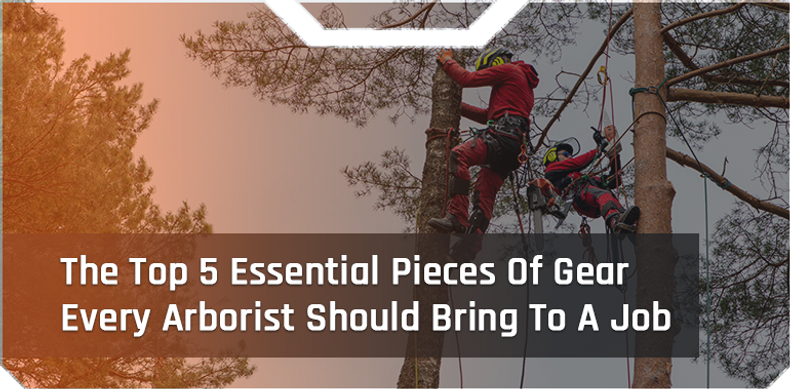There is a lot of information about a lot of Arborist Gear out there these days, in fact there may be too much.
Despite all of this information, it is sometimes hard to find exactly the information you need. A lot of articles, videos, and websites about Arboriculture really use a lot of words without saying much.
For those of you who just want to know what type of Tree Climbing Gear you need to start out with, this guide is for you.
Let’s cut all of the nonsense and get to it.
1. Personal Protective Equipment (Don’t Forget Those Chaps, Cowboy)
Yeah - you read that right - you are going to want some chaps…Specifically chainsaw resistant chaps, or at least chainsaw resistant pants.
You really should never show up to a job without all of your PPE. This is the stuff that is going to keep you safe. Even if you want to be a daredevil, your supervisors probably won’t let you do any work without the proper protective gear. If they do, you may want to think about whether they like you or are secretly wishing you harm.
PPE You Pretty Much Always Need:
- Boots
- Gloves
- Helmet
- Eye Wear
- Ear Protection (Plugs Or Muffs)
- Chain Resistant Pants Or Chaps
2. A Harness
If you want to get into that tree, you are going to need something to attach yourself to the line. A harness or climbing saddle is going to fill that role in your life. You can also attach all of your shiny new gear to it.
Pick out a saddle or harness that is comfortable. If it ain’t feeling good when you are on the ground, imagine how you will feel when it is attaching you to a rope. Think about wedgies, pinching, squeezing, chafing. None of these things will make your day enjoyable.
3. Climbing Rope
The rumors are all true - you need a climbing rope to climb trees professionally. It is extra helpful if you get a tree climbing rope when you want to climb a tree!
All tree climbing ropes are static ropes. They come in different diameters, strand counts, colors, materials, and levels of stretch.
When you are starting out, what you probably want is a 11 MM (7/16 Inch) double braided, 24 strand rope. We sometimes call double braid ropes kernmantle, meaning that they have a separate core and cover. A nylon core and polyester cover will give you a real nice balance for climbing and knotting.
Features To Look For In An Arborist Climbing Rope:
- Firm Core
- Low Stretch
- Double Braid
- High Strength
- Soft Grip Cover
- 24 Strand Construction
- 11 MM Diameter (7/16”)
4. At Least 1 Million Carabiners & Snap Hooks
You are really going to need a lot of carabiners and snap hooks. It’s going to astound you how many carabiners you use throughout the day. Buy them in bulk. Get them in different shapes and sizes. Pick out your favorite color.
- Get some that have self locking safety gates.
- Get some that open and close easily.
- Get some triple lock gate carabiners.
- Get. So. Many. Carabiners.
5. Work Positioning Lanyard
Positioning Lanyard is usually used as a secondary attachment method in your climbing system. You will need it to keep you in place.
Make sure your Positioning Lanyard meets strength requirements for the ropes, snaps, and biners that you are using it with.
You may want to consider investing in a flip line. Fliplines are Positioning Lanyards with a steel wire core that, as the name implies, make it easy to flip up and down a tree. They are pretty popular and may make your life easier.
Let’s Get You On Your Way
You don’t have time for anymore malarkey. We know this, so we are going to send you on your way to get some gear. You are ready to start your path to climbing trees and becoming an Arborist.
Hopefully this guide was simple enough to help you start your search for Tree Climbing equipment. If you want some more detailed info, you will find no shortage of stuff to read in our blog or on our site in general. Go get it!





